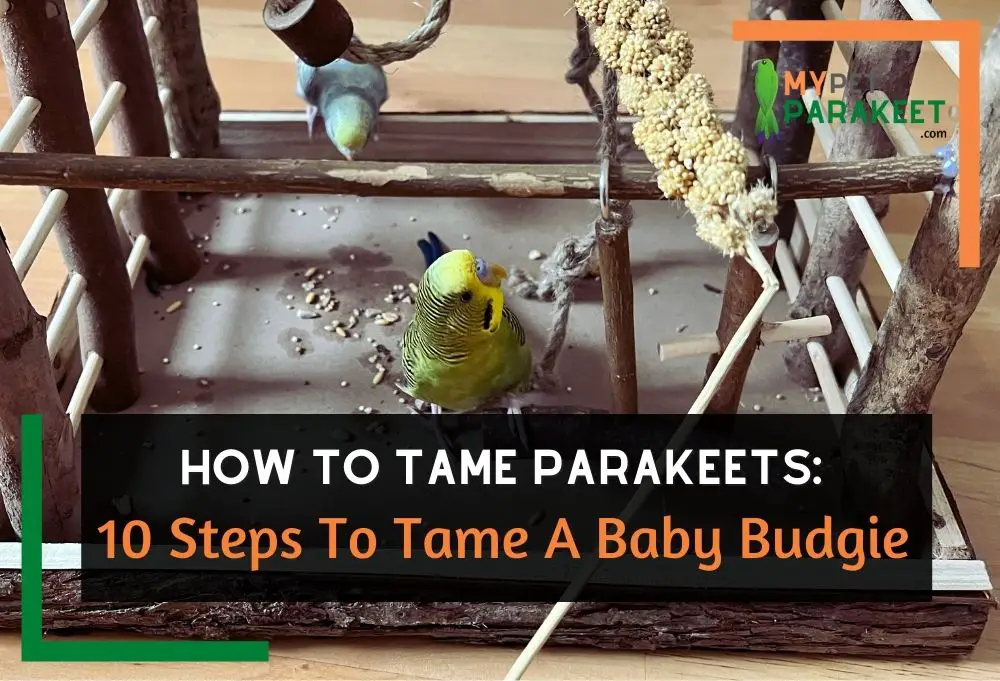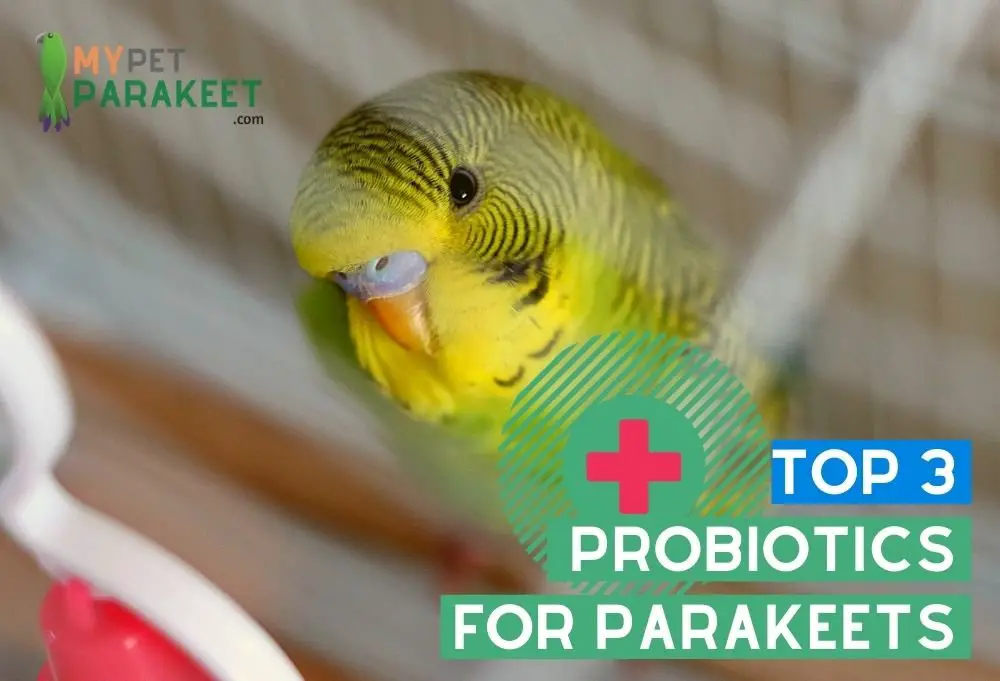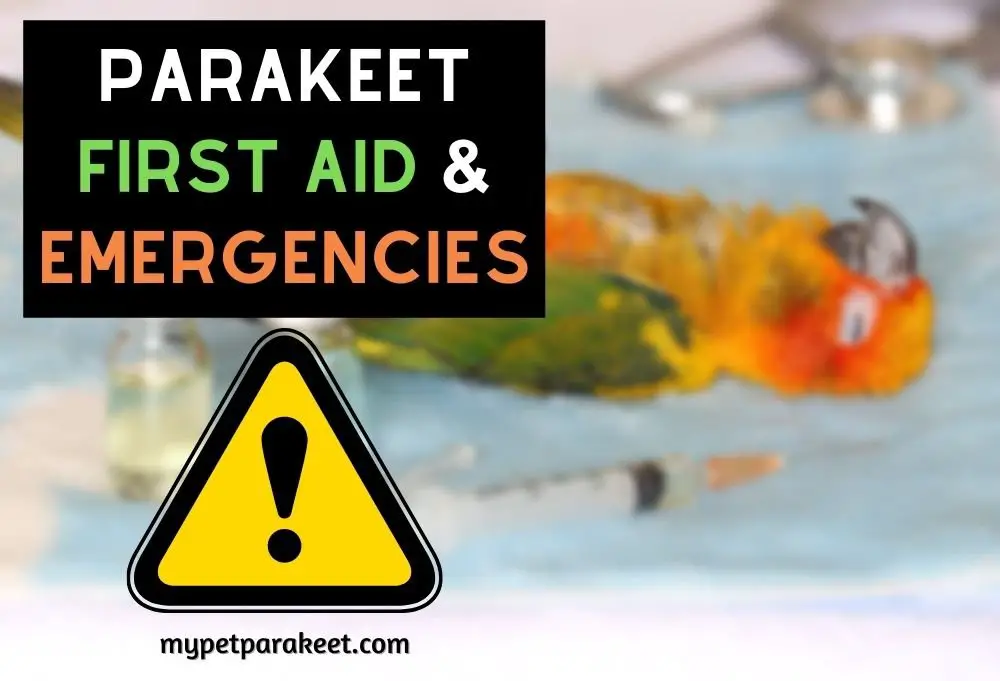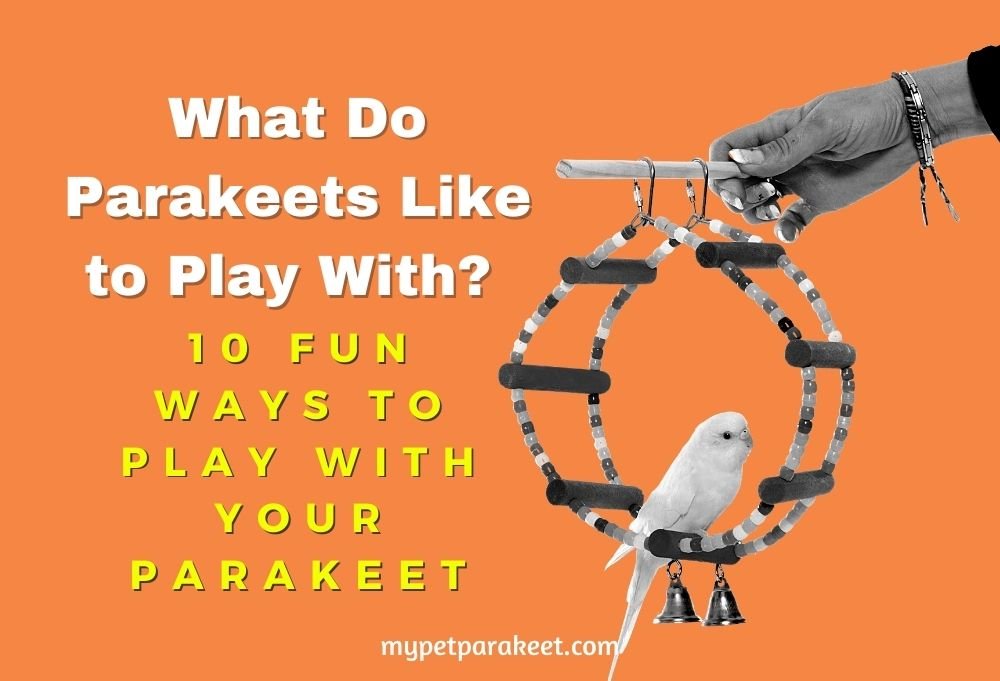Parakeets can be entertaining and rewarding pets. Interacting, playing, and talking to your parakeet can help you form a bond. To interact this way, your parakeet needs to be somewhat tame.
Parakeets that have had minimal contact with humans as babies will often be fearful or nervous around you. In contrast, some baby parakeets can be purchased from breeders who have usually handled them as babies to naturally tame them.
If you have acquired a nervous young parakeet or even an antisocial adult parakeet, you can tame them yourself! Taming is relatively easy but does take some time, patience, and persistence.
Read on to learn our top 10 tips for taming your parakeet at home so you and them can form a close bond!
Why It Is Important To Tame Your Parakeet
Before we start, it’s essential to know just why taming your pet parakeet is helpful. It’s not necessary to tame your parakeet, as long as it has a large aviary with lots of other parakeets to socialize with. Many parakeets are not kept as aviary birds but rather as pets in the home.
Your pet parakeet in the home will have limited space and opportunities to socialize and explore, so taming them will mean they can venture safely outside their cage. A tame parakeet can fulfill their social and mental needs in interacting with you and their wider environment.
When you have a tame parakeet, it is also simpler to care for their physical needs. A tame parakeet is easy to catch and examine.
This way, you can monitor their health closely by actively participating in their own care by voluntarily being held and touched. This kind of training is often done in zoos, with many animals participating in their own health care.
Untame birds will be highly stressed when they are chased, caught, and held. If it is an ordeal to grab and handle your parakeet, chances are you will do so less often, so subtle health issues can go unnoticed.
In addition to your parakeet being a lot calmer and relaxed when tame, they are also a lot more fun for you to interact with! A tame parakeet will happily interact with you. You won’t have to worry about them biting you or becoming stressed.
10 Steps To Tame A Baby Budgie
Step 1 – Settling In
Before you can even begin to try and interact with your parakeet, you need to focus on making it comfortable in its environment. A change of environment can be very stressful for a small bird. They will need time to settle into their new home.
Ensure they have everything they need: food, water, perches, toys, and a safe cage location.
This adjustment period will be different for every parakeet. Some will be visibly comfortable in a day or two, while others may take a couple of weeks to relax fully. Your new parakeet should be eating, drinking, exploring, and engaging with their environment before you consider any type of taming exercise.
Step 2 – Building Trust
During this adjustment period, make sure that you interact with your parakeet from outside their cage.
- Talk to them and spend time around them. They may feel stressed being in a busy environment, but getting used to the dynamic home environment will help them feel at ease with human presence.
- Talk and move around them a lot so they can get used to your sounds and movements. When talking to them, raise your hand gently to their cage so they can get accustomed to the sight of your hands.
- Do not tap on the cage nor put your finger through the wires. Invading their safe space will make them more nervous. Over time, they will come to trust that you mean them no harm.
Here are our best tips for building trust with your parakeet!
Step 3 – Watch Your Body Language
Clearly, we don’t share a language with parakeets. They cannot understand the words we say or what the movement of our bodies means. But, they are surprisingly intuitive. They will sense your intentions from your tone of voice and body language.
Keep your tone of voice soft and even. Loud, sharp, or sudden noises from you can make them distrustful of you. Keep your body language gentle and moderately open. If they are very nervous, do not face them front-on with your shoulder parallel. This wide stance can appear aggressive or dominant. A soft turn to your body while still being open to them will make you seem more relaxed.
During training, it’s important your body language stays steady. If you flinch or are shaky, they will pick up on your unease and will also feel uneasy themselves.
Step 4 – Read Their Cues
Understanding your parakeet’s body language will help you adjust the way you approach them and how you advance their training and taming conditioning.
If your bird is visibly stressed and trying to get away from you, you need to step back and let them relax. Only add more stressors to them as they relax with the last change. For example, don’t open their cage to approach them until they are relaxed with your presence outside the cage.
A relaxed bird will approach you and interact happily with you. You will know they are ready to interact physically when they do not react negatively to your movements outside the cage. You can test this by offering them a treat through the cage wires. If they show interest in taking the treat from your hand, they are ready for the next step!
Read more on interpreting a parakeet’s behavior.
Step 5 – Prepare The Room
Before you open your parakeet’s cage to interact physically with them, you need to ensure the room is safe for them to be in. If they do not have their wings clipped, then the whole room will need to be secured and safe; you will be surprised by the trouble they can get into. Ensure there are no other pets in the space, as you can’t know how they will react.
See our post here on how to safely let your parakeet out.
Step 6 – Let Them Set The Speed
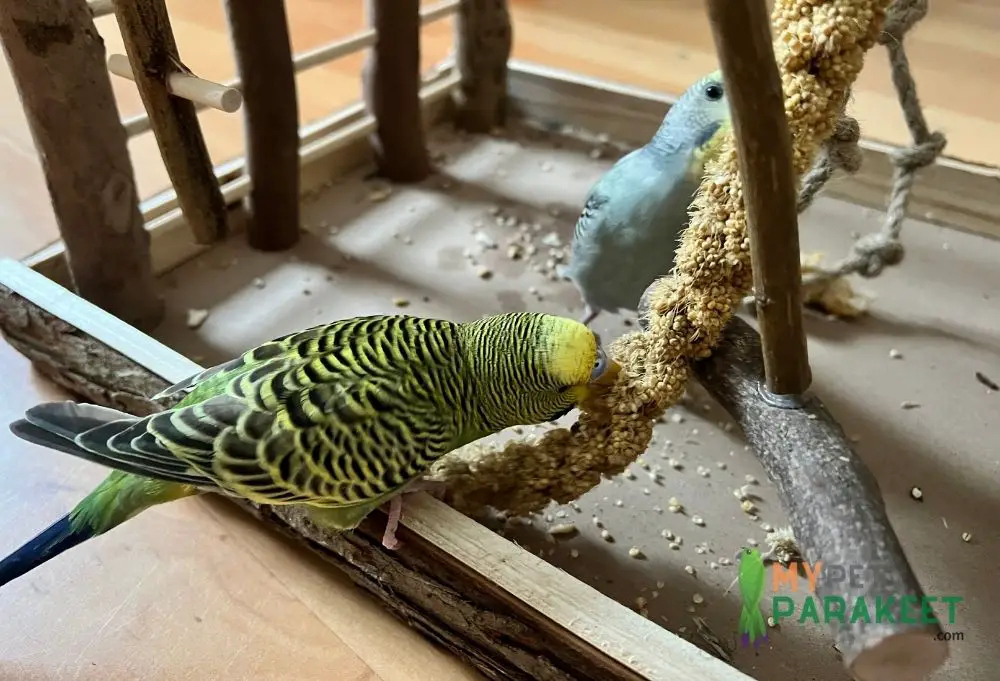
Many parakeets taming guides will have you force your parakeet into uncomfortable situations until they relax. Often this involves grabbing them and pulling them from the cage.
This is a training technique called “flooding.” You continuously expose your parakeet to negative stress until they eventually get over it. It can cause some long-term stress.
We do not recommend this for positive and lasting taming. The best results will come from letting your parakeet choose when and how they want to interact. Our above tip of “read their cues” will help you know when they are ready to move forward. You have to be aware of your parakeet’s body language.
Step 7 – Positive Reinforcement
During each step of interacting with your parakeet – from talking to them, opening the cage, reaching out to touch them – you should positively reinforce them when they display good behavior. Read here for some of the parakeets’ favorite foods.
Each time your parakeet does something new that you want them to do, like coming towards you or comfortably touching you, you should reward them. This age-old training technique will teach them that doing these things is good because they get treats!
Step 8 – Touch Training
To get them tame enough to touch, you should let them touch you first! Offer food from your hands or fingers. Reserve the very best treats for this to keep them motivated. When they let you touch them, reward them. If they trust you and feel comfortable they are safe, they will happily take food from you. Soon, they will associate being touched with a positive thing.
If you are nervous about bites from an aggressive parakeet, we strongly advise not using gloves. Gloves can cause a fear reaction, and they will start to have negative associations with your hand.
Wondering why your parakeet is biting? Find out here.
Step 9 – Step Up
There are two different ways to get your parakeet to step up onto your finger.
- Push up on them – While feeding your parakeet their favorite treats with one hand, bring the other hand up to their belly, one finger out. Start to push your finger gently into their stomach. If they feel safe, they will naturally step onto it to continue to eat the treats. If they stay calm, keep feeding them treats. Soon they will ignore your finger.
- Lure them up – the other trick is to put their favorite foods just out of reach of their beak. They will try to lean forward from their perch to reach it. Put your finger up in between them and your hand with treats. To get to their food, they will have to use their finger as a step to get there. Once on, give them lots of positive reinforcement.
Step 10 – Set Expectations
This step is your last thing to keep in mind as you slowly work towards taming your parakeet. As we mentioned above, you should let them set the speed.
But parakeets can be cheeky little things, and they will try to do the minimum to get the rewards. Once they have displayed a positive behavior, such as letting you touch them or stepping up on your finger, make sure you set that expectation for them the next time.
Once you offer them a goal and don’t want to do it, don’t make it easier. They will soon learn they if they are stubborn, they get what they want. Be consistent and patient, and they will realize they can’t fool you. This stability will build trust between you and your newly tamed parakeet!

